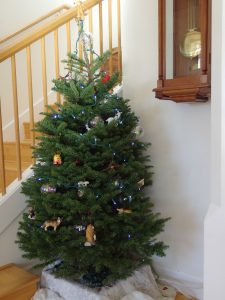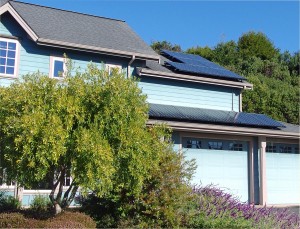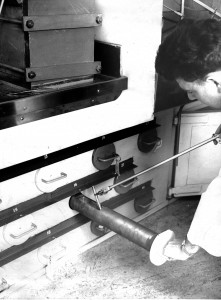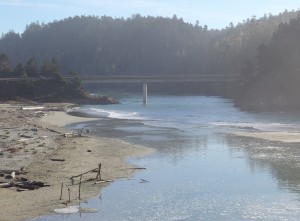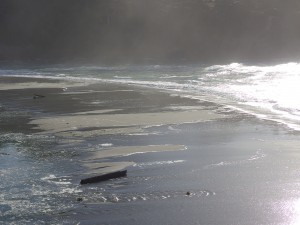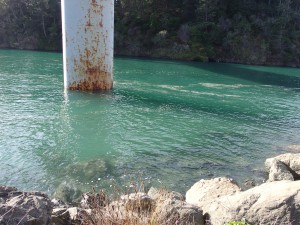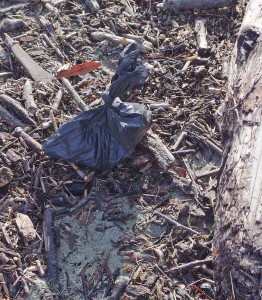Archive for the ‘protection’ Category
The turning of the year
Here we are at the turning of the year. It’s been a hard year in many ways. My particular concern has been the environment and natural resources. I’ve had to witness oil and gas interests take precedence over the protection of fragile landscapes, sacred cultural resources and vulnerable water supplies. Wildfires have devastated Northern California, where I live, including parts of Santa Rosa, the city where we go for many services. A huge fire now threatens Santa Barbara, in southern California, where I lived in the 1970s. Here on the northern coast, warming ocean temperatures have wrought havoc on the kelp forests and the sea creatures that depend on them. Throughout the world, as starving people flee drought-stricken lands, tribal hostilities are increasing.
Meanwhile, the days follow each other. The sun’s arc rises lower and lower in the sky, its rising and setting further and further to the south, and the darkness of longer duration. There will be a pause, a solstice or sun-standing-still, and then a return of the light, and we will celebrate, in our various spiritual traditions, a return of hope.
May you all find hope and joy in the days to come.
Rooftop solar panel program at risk
I’ve just done my citizen activist stint for the week: fired messages to the California Public Utilities Commission, Governor Brown, and my state assemblyman and senator regarding a proposal by big utility companies to gut the rooftop solar panel business by increasing infrastructure fees and drastically reducing the credit solar panel owners get paid for releasing the surplus electricity they generate. It seems that letting consumers generate their own electricity is cutting into big business’s profits. The CPUC is expected to make a decision by mid-December.
Here’s what I wrote to the CPUC. If you’re interested in adding your voice, you can find more information at:
http://mendocinosolar.com/ (our vendor)
http://www.saverooftopsolarca.com/
TO: California Public Utilities Commission
In this time of global climate change, I urge you to reject a proposal by utility companies to gut the solar “net metering” program by increasing infrastructure fees and severely reducing the credit solar panel users earn by selling their daily surplus to utility companies. The utilities’ proposal privileges company profits over responsible citizens’ response to the challenge of global warming.
When my husband and I had solar panels installed on our house nearly two years ago, we contracted with PG&E to pay a monthly service fee, which we assumed was based on a reasonable calculation of our share of infrastructure costs. We also contracted to sell back our excess power at a reasonable market rate. If allowed to charge excessive fees, and/or short solar panel owners as vendors of electricity, PG&E and other utility companies will not only discourage other people from installing rooftop solar systems, but also discourage users of existing solar panel installations to be frugal and responsible in their use of electricity, since there will be no incentive to conserve.
The issues raised by global warming are so huge that we cannot allow any backsliding on conservation. Again, please reject the utility companies’ proposal.
Tooth Fairy Tests for Strontium-90
While he was completing his degree, my husband Tony worked as a physicist at New Zealand’s National Radiation Laboratory in Christchurch. One of his tasks was testing for the presence of the radioactive isotope Strontium-90 in children’s milk teeth This 1960 photograph shows him working in the lab.
Since the end of World War II in 1945, the United States, along with its allies France and Britain, used the Pacific region north of New Zealand as a testing ground for nuclear weapons. By the mid-1950s, casual attitudes about fallout from these tests had given way to concern. In 1957 the New Zealand Government charged its Department of Health with monitoring environmental radioactive contamination in New Zealand and the Pacific areas with which New Zealand was associated. Since the National Radiation Laboratory in Christchurch was already monitoring radioactive pollution and controlling the safe use of ionizing radiation in medicine, education, research and industry, it seemed a logical extension to extend its responsibilities to collecting samples, analyzing and interpreting data on environmental levels of radioactivity.
The idea of using of children’s milk teeth most likely came from the Baby Tooth Survey. This project was started in the US by the Greater St. Louis Citizens’ Committee for Nuclear Information, in conjunction with Saint Louis University and the Washington University School of Dental Medicine, and inspired similar initiatives in other parts of the world.
Strontium-90, which is chemically similar to calcium, is absorbed from water and dairy products into bones and teeth, and has been linked to bone cancer and leukemia.
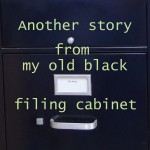 In New Zealand, evidence from the National Radiation Laboratory’s monitoring efforts helped moved the country toward opposition to French nuclear tests at Mururoa and to American warships’ visits to New Zealand.
In New Zealand, evidence from the National Radiation Laboratory’s monitoring efforts helped moved the country toward opposition to French nuclear tests at Mururoa and to American warships’ visits to New Zealand.
—–
Maureen is exploring the contents of an old black filing cabinet in her attic, which contains 55 years of her writing notes and memorabilia.
Citizen/Science
A king tide this morning, and we’d heard that it would be useful for people to document how high the water came, so that we’d have some idea what to expect as climate change brings rises in sea level. An excellent excuse to amble down to Big River Beach in Mendocino with my new camera and practice getting my horizons horizontal.
We’ve had no major rainstorms yet this winter to wash out the sandbar that builds up at the mouth of the river. From a vantage point on the cliff, we watched the tide creep over the bar, then took the old steps down to the beach to check on the tide height at the bridge. Yes, the water was high, too high to walk on sand and touch the bridge pier, as we can usually do.
Strolling back along the tide line, we were enjoying the peace and quiet beauty of the scene when I noticed something that set my teeth on edge: a plastic dog poop bag discarded by a driftwood log. I’ve seen such offerings frequently around this region: beside a signpost, on the edge of a trail. I want to shake the humans who leave them, who are so unclear on the concept of citizenship they have no thought for the environmental mess they are causing. It’s no wonder the sea level is rising.
Strip-mining New Zealand’s National Parks?
A disturbing mailing from my homeland. It seems the New Zealand government is considering a proposal to allow mining in some of the country’s high-value conservation land. Environmental organizations are horrified. Forest & Bird, one of the country’s major environmental organizations, noted in its online article:
Mining in any of these presently protected areas will further imperil our threatened species, destroy important habitat and leave us with contaminated waterways, scarred landscapes, subsidence and erosion problems and an almighty clean-up bill from ‘orphaned mines’.
Moreover, it will severely tarnish New Zealand’s ‘clean, green’ image.
The New Zealand Government has called for submissions from the public on its mining proposals. Submissions close at 5 pm (NZ time) on Tuesday, 4 May 2010. If you have visited New Zealand and seen what could be destroyed by mining, I urge you to learn more from Forest & Bird and other New Zealand environmental organization sites, and submit a protest. A good site for an overview of protest activity is 2precious2mine.
